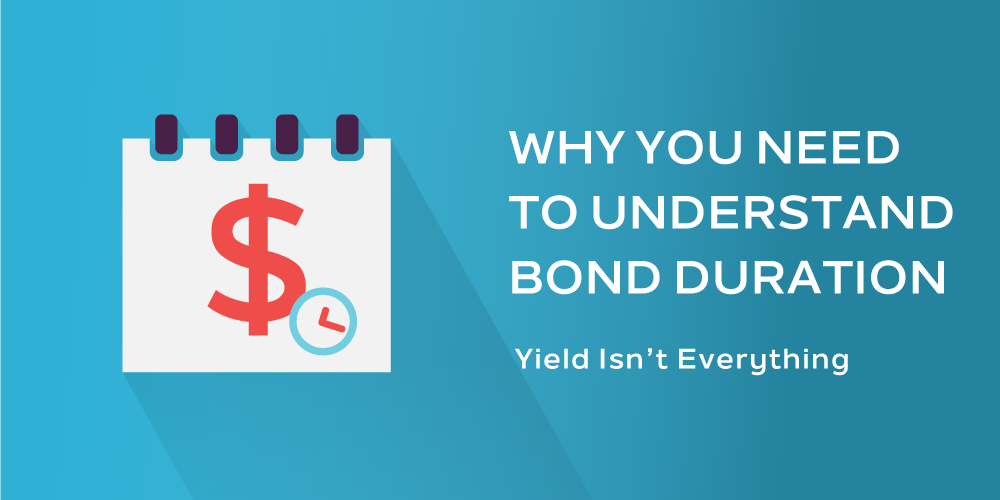
When investing in fixed income, the focus frequently concentrates on yield – how much the investment pays as an annualized percentage of the amount invested.
During periods of low interest rates, such as the one we are in now, investors are tempted to “reach for yield” by lowering credit quality, extending maturities, or both. The additional risks of lowering credit quality are self-explanatory – moves from CD’s and Treasuries to Corporates, Foreign, or High-Yield bonds come with increased risks of ratings downgrades and default. The risks of extending maturities are less clear. This shortcut helps investors understand how changes in interest rates might affect their fixed income holdings.
DURATION is the metric that measures the sensitivity of a fixed income investment or fund to a 1% change in interest rates. Duration is expressed in years but represents the percentage change of the price of the security. For example, a bond with a duration of 5 is interpreted as a 5% change. If rates were to go up/down by 1%, the bond price decreases/increases by 5%. This makes sense. If interest rates rise, the only way for a bond to reflect the required higher total return is for its price to decrease – the coupon payment is fixed. And vice versa.
The general relationships between bonds and duration are:
The longer the maturity, the higher the duration
The higher the coupon, the lower the duration.
Any fixed-income fund or ETF worth its salt should provide current yield, average maturity and credit quality, and duration. Here are three ETF examples:
ETF NAME Wtd Avg mty Eff duration 30-day SEC Yld
AGG Core U.S. Aggregate Bond 7.42 5.22 1.95
TLT Long-term Treasuries (20+) 26.35 17.68 2.46
IEI Intermediate Treasuries (3-7) 4.68 4.44 1.16
Should interest rates rise by 1%, the owner of IEI should see the share price decrease by 4.44%. The investor who reached for yield by buying the TLT, would see his investment decline by 17.68%.
With talk of a Fed increase in rates, now might be a good time to review your fixed income holdings for their duration.










